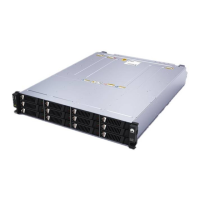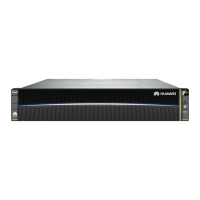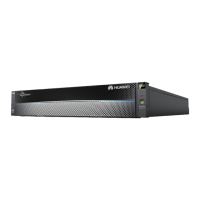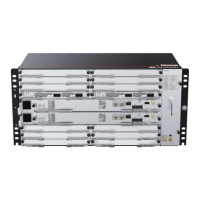N2000H V3 Appliance
User Guide
4 Configuring the N2000H V3
Huawei Proprietary and Confidential
Copyright © Huawei Technologies Co., Ltd.
Step 7 After you confirm that the parameters are set correctly, click Create.
Step 8 Wait until Status of the Create Namespace task changes to Success. Then, click Close. The
name of the newly created namespace is displayed under the Namespaces node in the DFS
management navigation tree.
Step 9 Create a shared folder that requires DFS backup.
1. Right-click the namespace and choose New Folder from the shortcut menu.
2. Set Name to the name of the shared folder. The name is a logical folder name used in the
DFS namespace, for example, department1.
3. Click Add to set Folder targets. That is, map the logical folder to a real folder on the
physical server.
4. Click Browse and set Server to the name of the physical server that stores the folder.
5. Click New shared folder and create a real folder on the specified volume on the physical
server.
Share name: Set this parameter to the logical folder name used in the DFS namespace,
for example, department1.
Local path of shared folder: Create a real folder on the specified volume on the
physical server. You are advised to set the name of the real folder to that of the logical
folder, for example, department1.
Shared folder permissions: Set read and write permission for the shared folder based on
the actual service plan, for example, All users have read and write permissions.
6. Click OK.
7. To enable contents in the logical folder to be stored on multiple servers for DFS
mirroring purposes, repeat Step 9.3 to Step 9.6 to add a shared folder on another physical
server for this logical folder.
8. In the Replication dialog box, click Yes. The Replicate Folder Wizard window is
displayed.
Step 10 On the Replication Group and Replication Folder Name page, click Next.
Step 11 On the Replication Eligibility, click Next.
Step 12 On the Primary Member page, select the primary server of the replication group, for
example, RH2285-121. Then, click Next.
When a replication group is created, the primary server forcibly replicates contents from the local shared
folder to the shared folder on the secondary server and forcibly deletes files in the shared folder on the
secondary server. To prevent data loss, you are advised to keep the shared folders empty on all servers
before you create a replication group.
Step 13 On the Topology Selection page, set a topology type for the contents replicated between
servers. Then, click Next.
Hub and spoke: This topology type requires that a replication group contains three or
more members, namely, at least three physical servers. In this topology, all members are
connected to the central member (primary server). When a member's shared contents are
changed, the contents must be synchronized to the central member first, and then the
central member synchronizes the contents to other members.
Full mesh: This topology type is applicable to a scenario where there are a maximum of
10 members without a central member. When a member's shared contents are changed,
the contents are synchronized to all the other members without requiring a central
member to transfer the contents.

